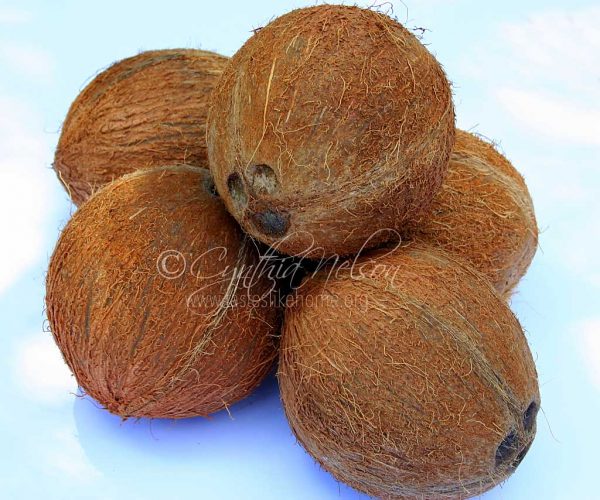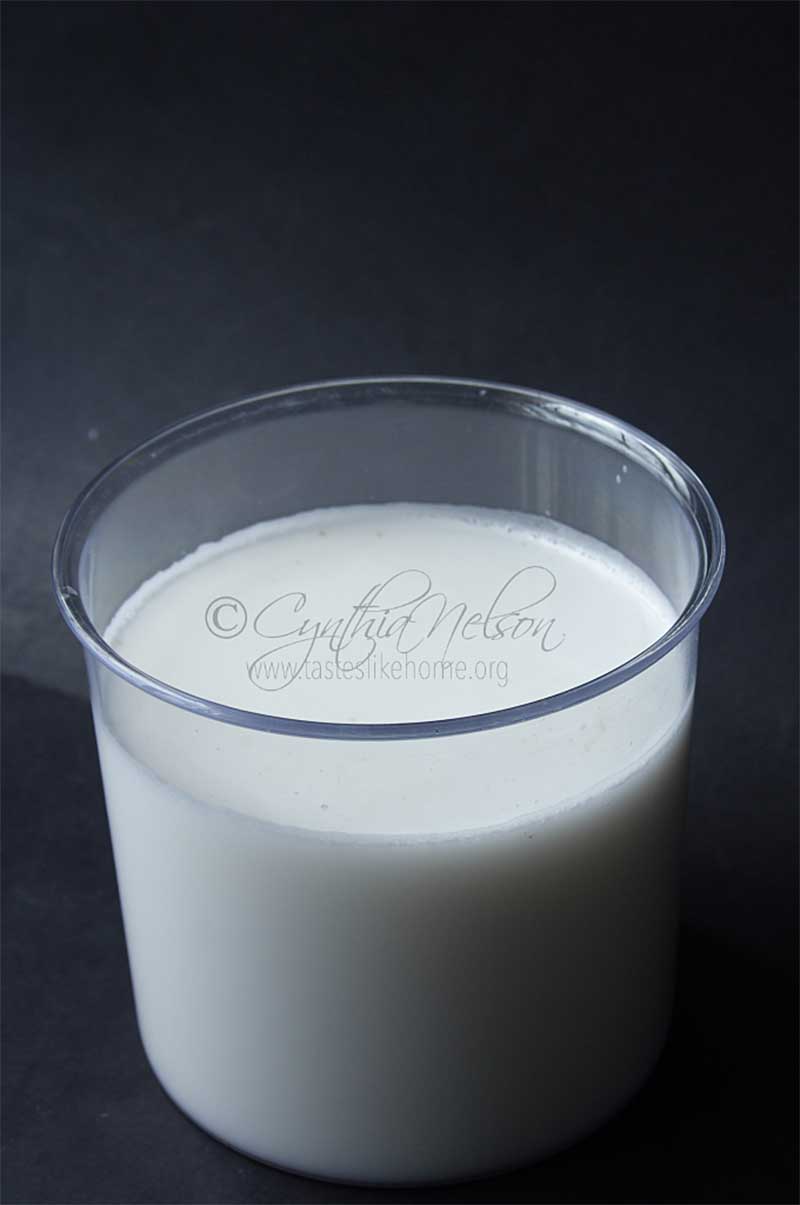
I get asked often about my stated preference for the use of fresh coconut milk in recipes as opposed to canned coconut milk or powdered coconut milk. As recently as last week, a friend called asking why I am always recommending the dilution of canned coconut milk when cooking.
Here’s the low-down.
Fresh coconut milk is made from the flesh of fresh coconut that has been grated, to which water (room temperature or warm) is added, mixed well by squeezing the coconut or blending the coconut and water then passing it through a sieve.

Coconut milk powder is generally made up of coconut milk, to which maltodextrin (a type of vegetable starch that thickens, acts as a filler, increasing volume) and sodium caseinate (a mammal’s milk protein used to emulsify, thicken, and stabilize) have been added. Canned coconut milk is made of coconut milk and water along with additives that work as emulsifiers, thickeners, fillers, and preservatives that increase the shelf life of processed foods. The exact names of the additives vary depending on the brand of coconut milk.
Based on the description of canned coconut milk, you can see why it is thicker, creamier, and whiter than fresh coconut milk and powdered coconut milk when reconstituted. You may also notice, depending on the brand of dried coconut milk powder that the viscosity (thickness, consistency) when blended with water (as per package instructions), may also be thicker and creamier than fresh coconut milk.
A lot of people these days opt for using canned or powdered coconut milk for the convenience of it being ready made and the ease of access or availability. The number of us who still opt to grate our own coconuts to make the milk is dwindling. There is, of course, the option of buying frozen grated coconut. I tried a couple of local brands (in Barbados) of the frozen grated coconut and did not like them. There was something added to the coconut that left a visible greasy film on the hands, containers and utensils used in the process of blending and squeezing it to extract the milk. As long as I can and am able, I will grate my coconuts.
Given the proliferation of the use of canned and powdered coconut milk and how the makeup is different from fresh coconut milk, use the following as a guide, however, if you prefer to use, particularly the canned coconut milk as is, then do you. From others and my experience, the canned milk is usually way too thick and heavy to use as is. Please note also, that depending on
the brand of canned coconut milk you are using, you may not have to dilute it at all, or you may have to dilute it with more than the recommended amount of water.
CANNED COCONUT MILK
Using room temperature or warm water, use a one-to-one ratio to dilute canned coconut milk. In other words, use 1 part canned coconut milk and mix it with 1 part water. For example, 2 cups of canned coconut milk with 2 cups of water. When you add the two, mix well to combine and continue with your recipe.
COCONUT MILK POWDER
Follow the package instructions to mix the dried powder with water. If the package does not indicate, you can use either room temperature or warm water. However, when blended, check that the consistency is to your liking. The consistency when combined may vary from brand to brand. Once mixed, use according to your recipe.
FRESH COCONUT MILK
Add 1 part fresh grated coconut to 2 parts room temperature or warm water and make the milk using either of these ways:
· Using clean hands, mix the coconut and water together, squeezing the coconut firmly; do this for 2 – 3 minutes, then strain passing it through a sieve then squeezing the coconut to extract the extra milk or use the back of a wooden spoon to press on the flesh releasing the juice.
· The other way to make the fresh coconut milk is to add the grated coconut and milk to a blender and blend for 2 minutes. Strain with a sieve then squeeze the pulp in the sieve or press using the back of a wooden spoon to extract even more milk..
· If you don’t have a sieve, drape a clean tea towel over a bowl, pour in the milk (whether mixed by hand or blender), gather the tea towel holding it firmly and wring tightly to squeeze the milk.
A FEW THOUGHTS
· Use whichever version of coconut milk you prefer when cooking or baking.
· Generally, in baking recipes that ask for canned coconut milk, the milk is to be used as is and not diluted. Be guided by the recipe.
· Canned coconut milk when used to make curries and stews, thickens more as it reduces.
· Coconut milk, regardless of the type, froths and rises as it boils so bear that in mind when considering the pot, pan and lid you are using.
· When using canned coconut milk for cooking certain dishes like Cook-up rice or Pelau where the cooking liquid is to be dried down, you may find curds or thick bits of the milk settled on top and around the edges of the rice. That’s okay, simply stir it in when the pot is done cooking.
· You can make a thinner version of coconut milk by adding water to the squeezed coconut flesh from the first batch.
· For thicker coconut milk, add 1 part grated coconut and 1 part water (1 cup grated coconut and 1 cup water), blend and drain/squeeze.
Cynthia
cynthia@tasteslikehome.org






